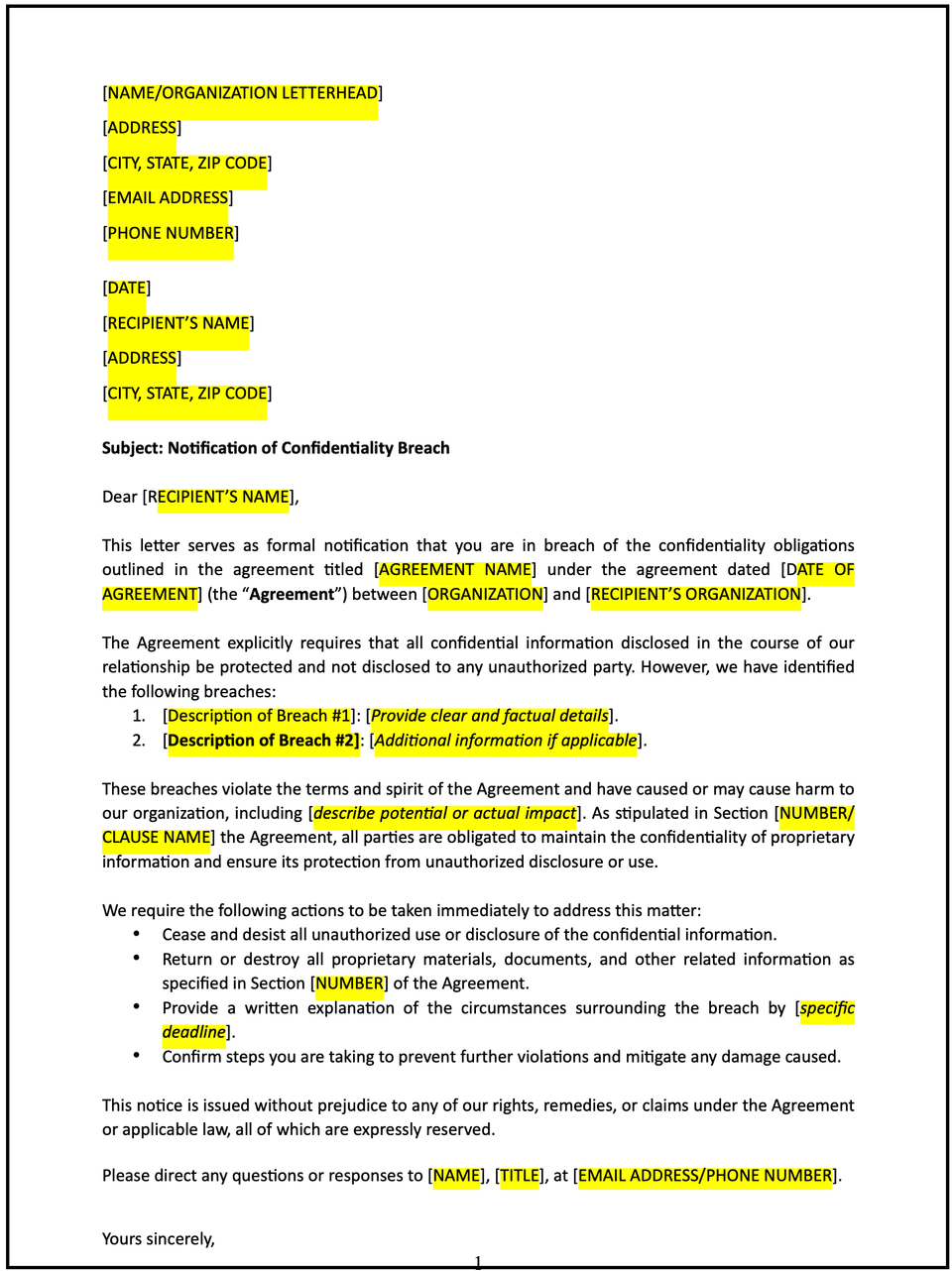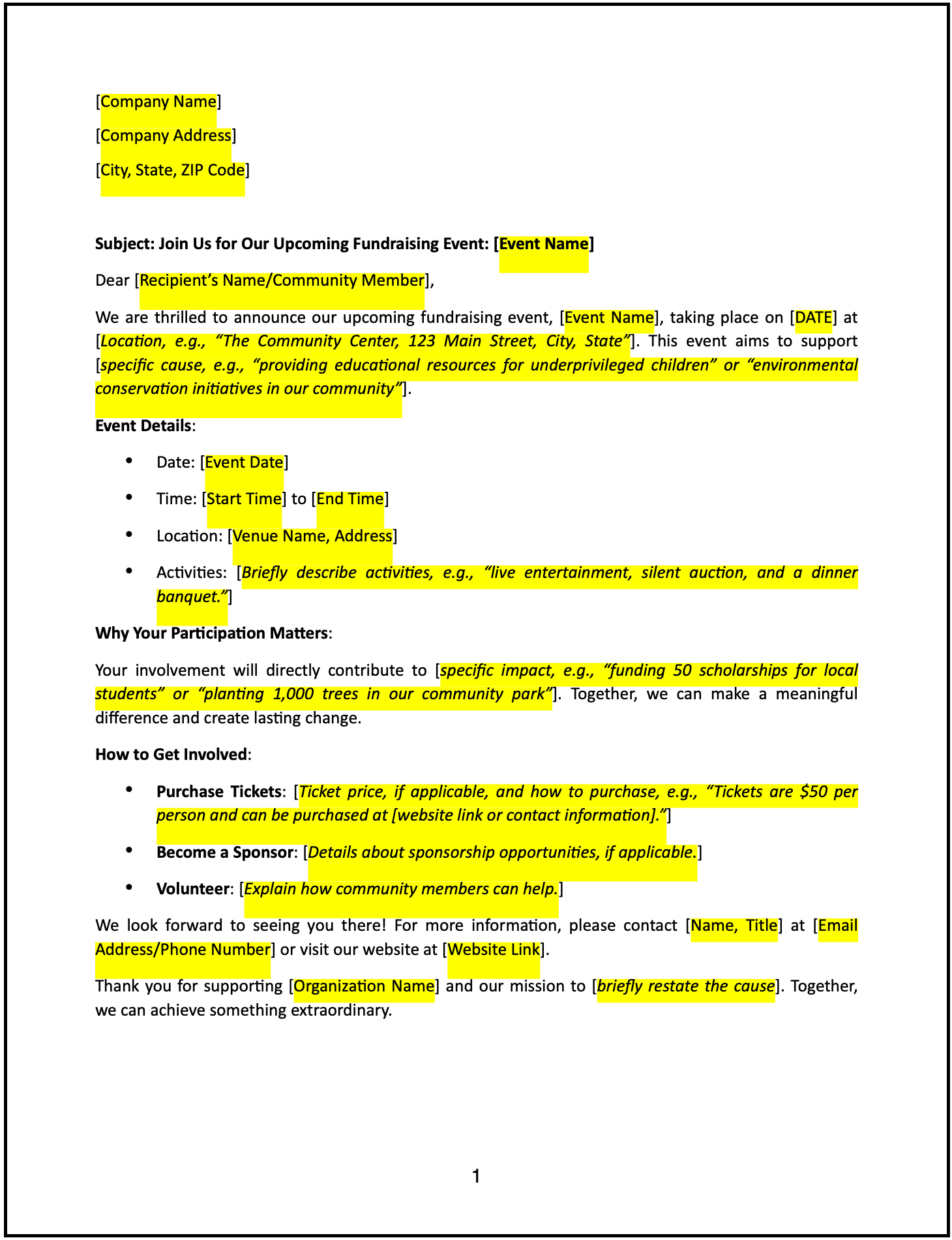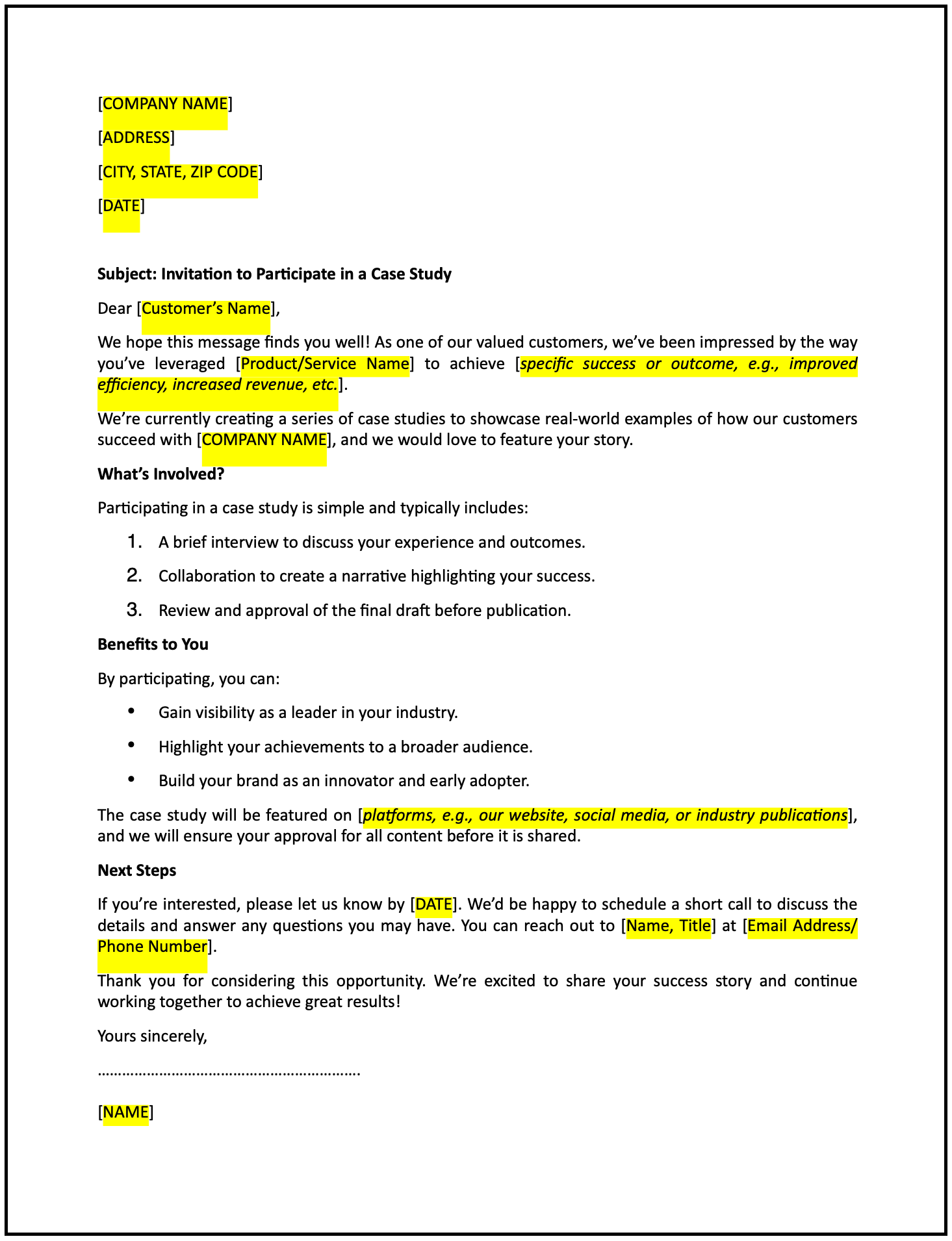Notification letter of confidentiality breach: Free template

Notification letter of confidentiality breach
A notification letter of confidentiality breach is a formal communication used to inform relevant parties about an incident involving the unauthorized disclosure or misuse of confidential information. This letter outlines the breach, its potential impact, and the steps being taken to address the situation, demonstrating accountability and transparency.
How to use this notification letter of confidentiality breach
- Open with an introduction: Address the recipient respectfully and state the purpose of the letter.
- Provide details of the breach: Clearly describe the nature of the breach, including what information was affected and how the incident occurred, if known.
- Outline the timeline: Include key dates, such as when the breach was discovered and any significant actions taken since.
- Explain potential impact: Summarize the possible effects of the breach on the affected parties or the business relationship.
- Detail corrective actions: Specify the measures being taken to address the breach, mitigate harm, and prevent future occurrences.
- Emphasize accountability: Reassure the recipient of your commitment to resolving the matter responsibly.
- Invite further discussion: Offer to provide additional information or answer any questions to ensure transparency.
- Maintain a professional tone: Ensure the letter is clear, respectful, and focused on fostering trust.
- Provide contact information: Include details for the recipient to reach out with questions or to discuss the matter further.
Benefits of using a notification letter of confidentiality breach
This letter ensures a structured and professional way to communicate a breach while fostering trust and accountability. Here's how it helps:
- Promotes transparency: Clearly communicating the breach helps prevent misunderstandings and builds trust.
- Reflects professionalism: A well-crafted letter demonstrates respect and responsibility in addressing the issue.
- Encourages collaboration: Sharing corrective actions fosters a sense of shared resolution and partnership.
- Builds trust: Open communication reinforces a commitment to confidentiality and ethical practices.
- Supports risk mitigation: Promptly addressing the breach minimizes its potential impact on affected parties.
Tips for writing an effective notification letter of confidentiality breach
- Be specific: Clearly describe the breach, referencing affected information and its context.
- Use professional language: Maintain a respectful and constructive tone to foster collaboration.
- Provide context: Briefly explain the circumstances surrounding the breach to ensure clarity.
- Highlight corrective actions: Emphasize the steps being taken to address the issue and prevent recurrence.
- Include actionable steps: Share instructions for recipients to follow if they need to take action (e.g., changing passwords or reporting concerns).
- Keep it concise: Focus on the essential points while ensuring the tone is professional and empathetic.
Frequently asked questions (FAQs)
Q: What details should I include in this letter?
A: Include a description of the breach, affected information, timeline, corrective actions, and contact details.
Q: Should I personalize the letter?
A: Yes, addressing the recipient by name and referencing specific agreements or contexts demonstrates attentiveness and professionalism.
Q: Who typically sends this letter?
A: Legal teams, compliance officers, or business owners typically send this letter.
Q: How formal should this letter be?
A: The tone should be professional, respectful, and focused on fostering trust and resolution.
Q: When should this letter be sent?
A: Send the letter as soon as the breach is confirmed and initial corrective actions are underway.
Q: Can this letter include recommendations for the recipient?
A: Yes, providing recommendations (e.g., reviewing security practices) can help mitigate potential harm.
Q: Is acknowledgment from the recipient required?
A: While not mandatory, requesting acknowledgment ensures the recipient understands and is considering the situation.
This article contains general legal information and does not contain legal advice. Cobrief is not a law firm or a substitute for an attorney or law firm. The law is complex and changes often. For legal advice, please ask a lawyer.


